The laboratory test includes the following components:
A. Handling
B. Touch
C. Vibration
D. Sweet spot
E. Ball rebound
F. Power
G. Durability
H. Frame breakage
I. Face breakage
A. Handling
The racket's ability to be moved with more or less difficulty (the feeling of heaviness or lightness of a racket moving). Manageability is one of the most important aspects for a beginner or intermediate player and in general for players with limited muscle strength. The racket is mounted on a mechanical arm and can swing freely like a pendulum. A sensor measures the force that the racket's pendulum motion generates in different directions. The higher the force, the more difficult it is to maneuver the racket.
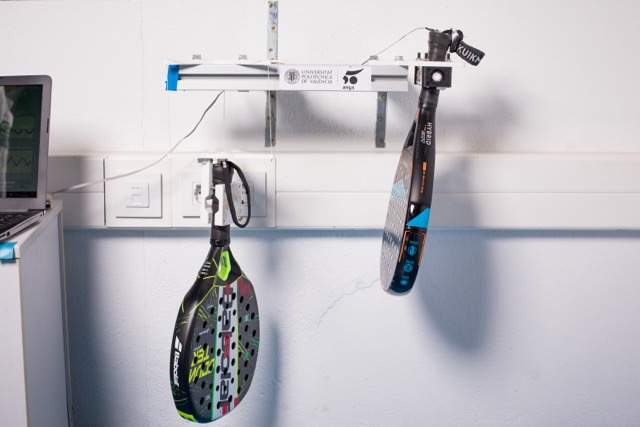
B. Touch
The response (feeling) that the racket conveys to the player's hand when the ball hits the sweet spot. The higher the touch, the harder the racket. For beginners, a soft touch is better, while intermediate players have different preferences. The racket is mounted on a test rig with sensors on the grip that measure the vibrations generated when the ball hits the sweet spot.
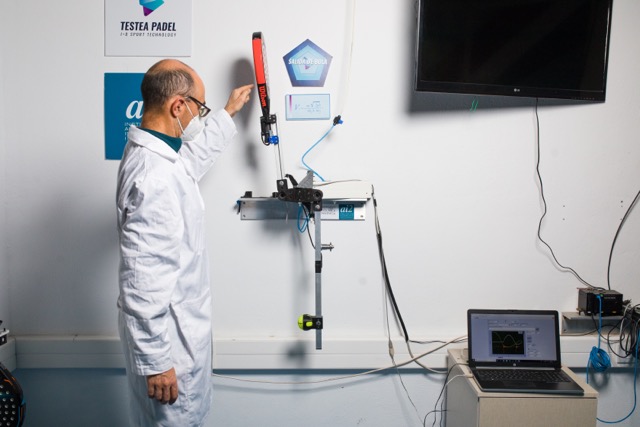
C. Vibration
The vibrations that the racket generates when the ball hits different points on the striking surface along the main axis of the racket (inside and outside the sweet spot). The more vibrations, the more strain on the player's elbow.The racket is mounted on a test rig with sensors on the grip that measure the vibrations generated when the robot hits 90 different places on the surface, both inside and outside the sweet spot.
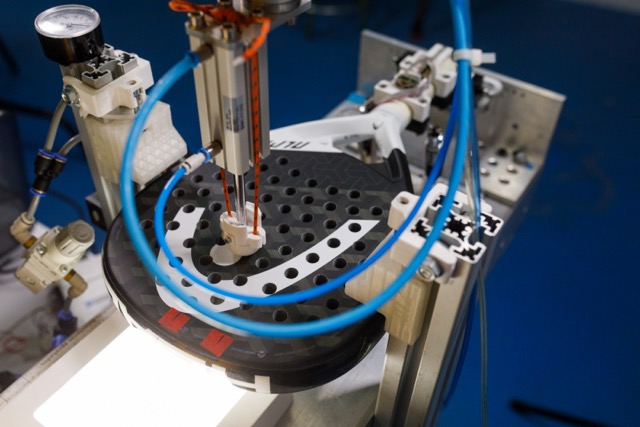
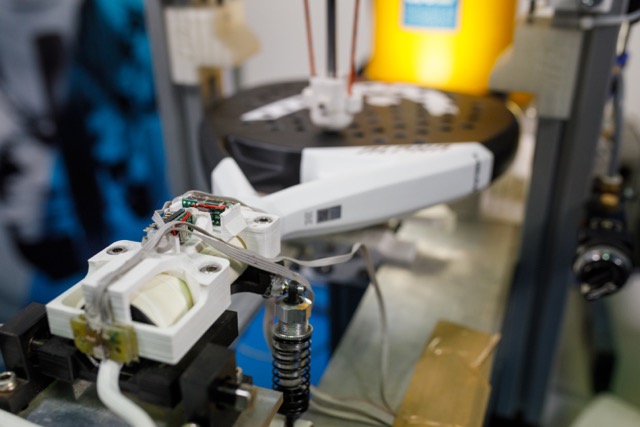
D. Sweet Spot
Sweet spot is the area on the face of the racket that gives the least vibration and optimal results when hitting the ball there. The laboratory measures the homogeneity, location and size of the sweet spot. A larger sweet spot is more forgiving for players who do not always hit the ball optimally. For more advanced players, the size of the sweet spot is less important.
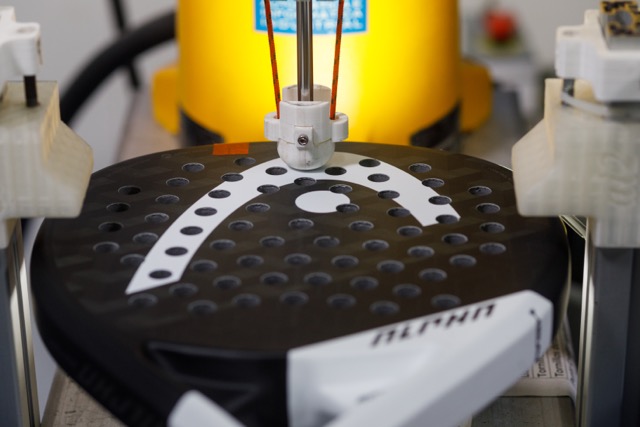
E. Ball rebound
The speed at which the ball comes out after a soft hit against the racket's sweet spot. A bouncier racket makes it harder to control the ball, especially for less advanced players. To test this, the racket and the ball are mounted on tiltable rigs. The racket's sweet spot meets the ball at a given speed. The angle of the bouncing ball (ball rig) is measured. The higher the angle, the more bouncy the racket.
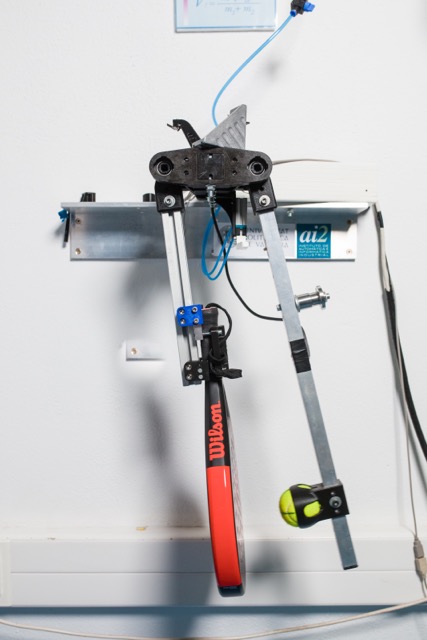
F. Power
The ball speed that the racket generates during a harder strike in downward trajectory. Power is a combination of the hardness of the racket and the location and properties of the sweet spot. A higher power value helps more advanced players to get better power in aggressive strokes (smash, layup…) but also helps less advanced or weaker players to gain more power in the basic strokes.To test this, the racket and the ball are mounted on tiltable rigs. The racket hits the ball at a higher speed. The angle of the bouncing ball (ball rig) is measured. The higher the angle, the more power.
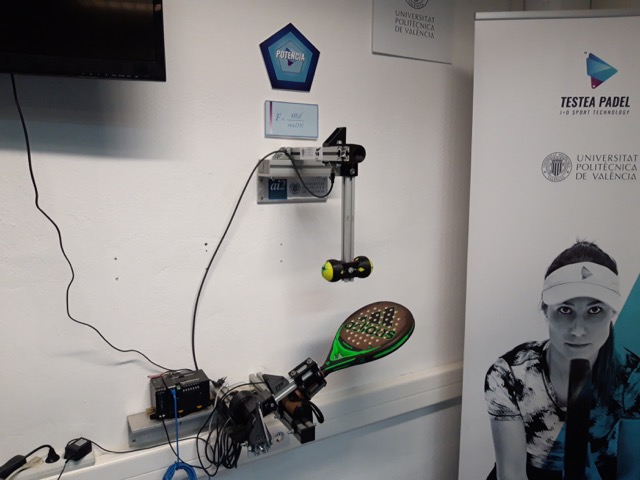
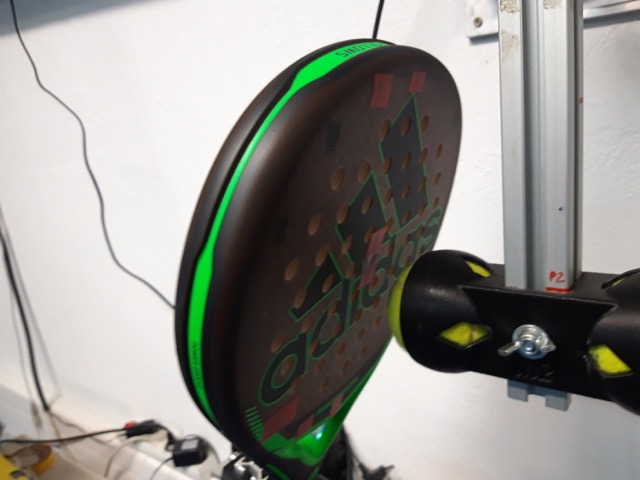
G. Durability
The laboratory exposes the face to 500 pressure-impacts and measures the differences in the properties of the racket before and after fatigue. The properties of the racket are registered in the form of vibrations at different points of impact. Some rackets become harder and others softer after the fatigue test. Optimal is that the racket retains its original properties. The limit for passing is at 20 percent absolute change.
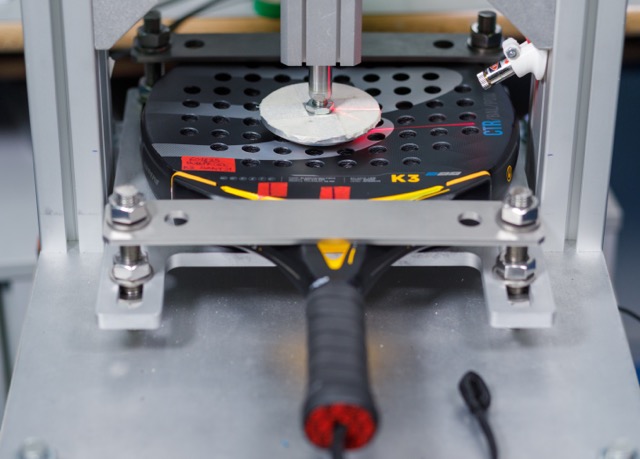
H. Frame breakage
The frame of a padel racket should be durable and able to withstand hits in the glass wall or fence. The laboratory exposes the frame to the force of a rounded steel body of 2.4 kg which is released from a height of 60 to 110 cm.
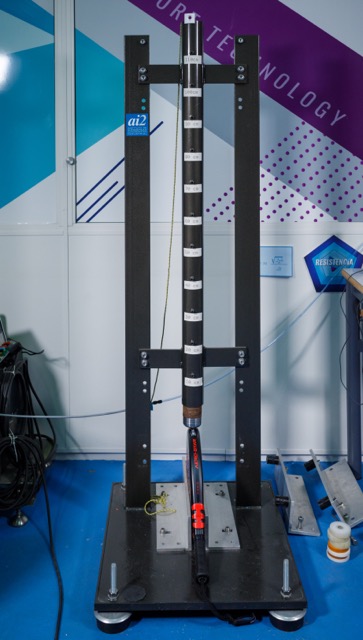
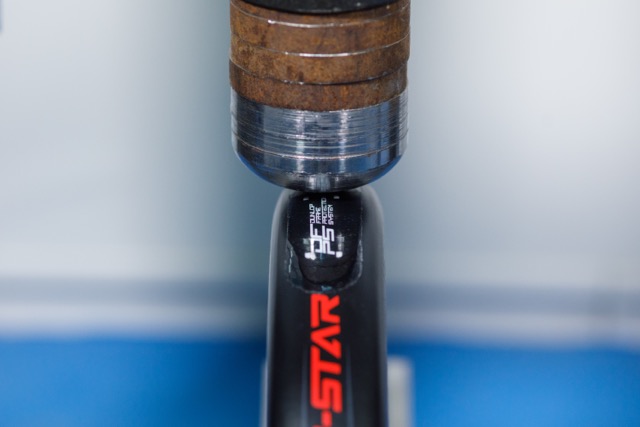
I. Face breakage
The striking surface/face of a padel racket should be durable and able to withstand hard hits. The laboratory exposes the surface to the force of a rounded steel body of 2.4 kg which is released from a height of 60 to 110 cm.
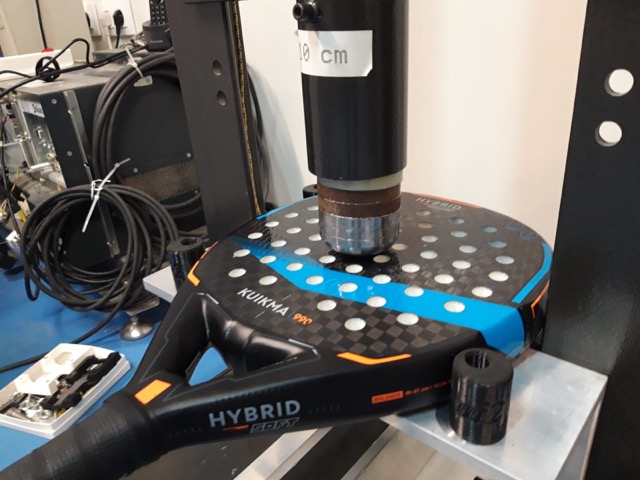
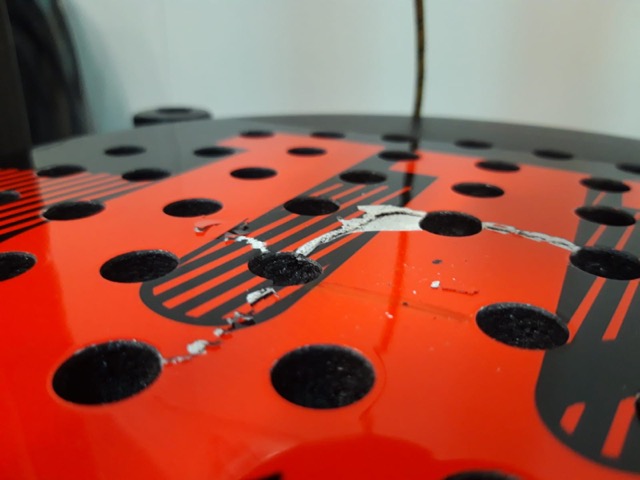
Summary of test results
The results from the various sub-parts have been graded and weighted together to a total grade in consultation with the laboratory. · Control (A, D and E) 20% How easy the racket is to manage, the size of the sweet spot and what control it gives on the strike. · Comfort (A and C) 20% What strain the racket puts on the wrist and elbow through vibration and weight. · Power (F) 20% The ball speed generated by the racket. · Quality and endurance (G, H and I) 40% The durability of frame and face and the resistance to fatigue. Touch (B) has not been included in the overall rating as this is more a descriptive parameter of the hardness or softness of the racket. The score gives equal weight to control, comfort and power, which suits a versatile player. There are of course different player types and requests for the properties of the racket.
